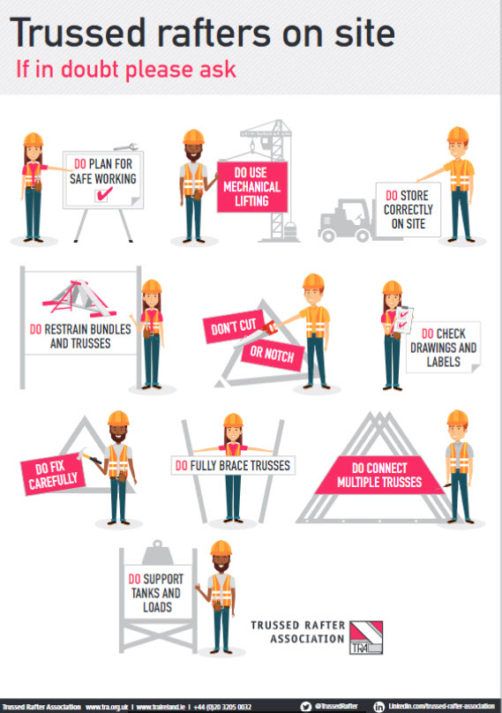Housebuilders and building contractors are set to benefit from simple new visual guidance designed to help them comply with health and safety regulations when working with trussed rafters on-site.
The ‘Trussed Rafters On Site’ one-page checklist from the Trussed Rafter Association (TRA) illustrates the 10 fundamental steps for site safety when working with trusses, forming the basis for a construction phase plan as required by the Construction Design and Management (CDM) regulations 2015.
The visual guide can also be used as part of site inductions and reminders for trained workers who might not always have easy access to the TRA’s longer technical guidance. It covers all the basic dos and don’ts of planning, mechanical lifting, storage, checking drawings, fixing, bracing and supporting loads.
Trussed rafters are an increasingly popular roofing component used by builders to improve the speed and quality of new home construction. As an easily accessible product that fits well with the industry’s move towards more modern methods of construction (MMC), they also help improve safety and reduce on-site labour costs.
Nick Boulton, chief executive at TRA, said: “Trussed rafters are a simple but effective way of building a roof. This new infographic is designed to provide information in a clear and visual way and has two main purposes. The first is educational – ensuring site staff know how to safely work with trusses. The second is to provide a clear and concise checklist which can be used to develop a CDM-compliant construction phase plan.”




